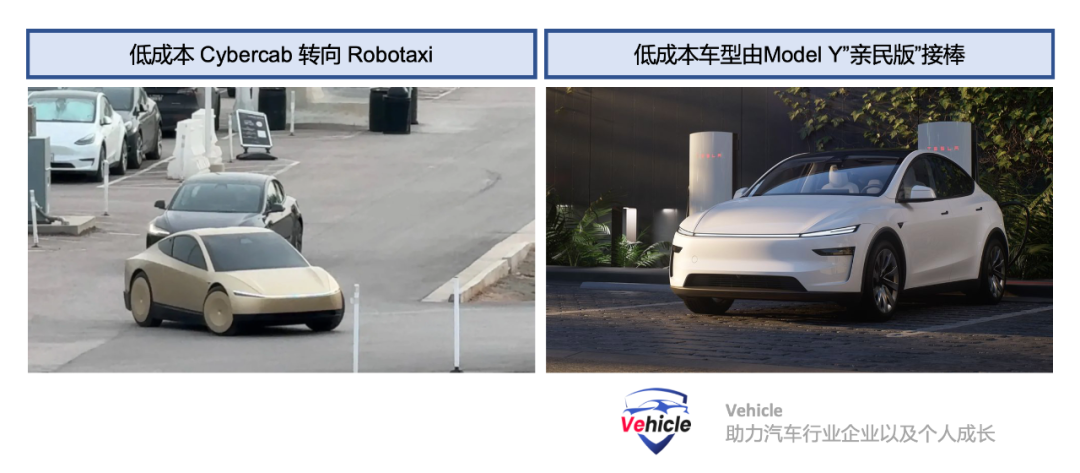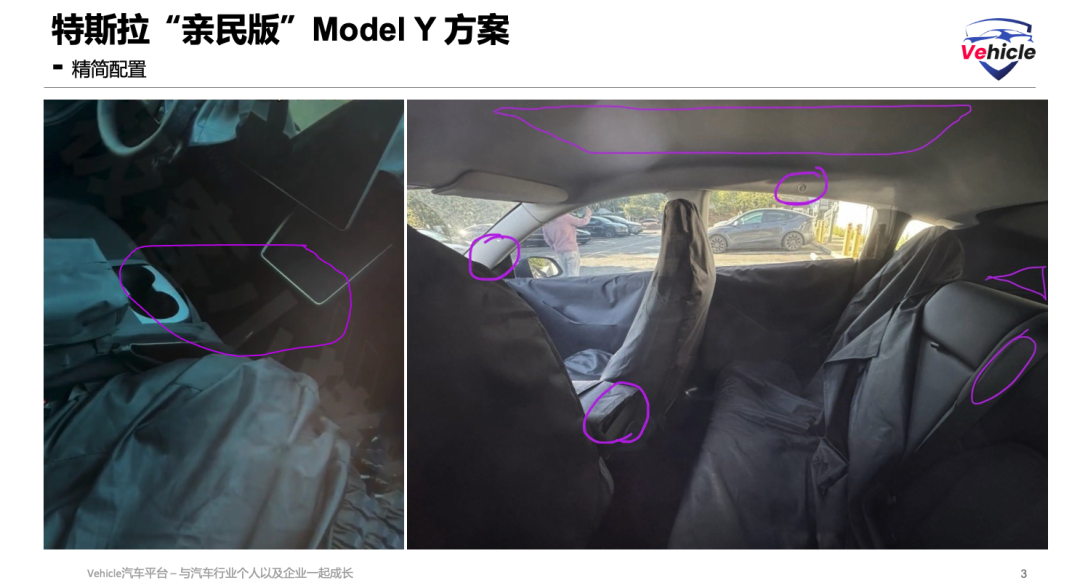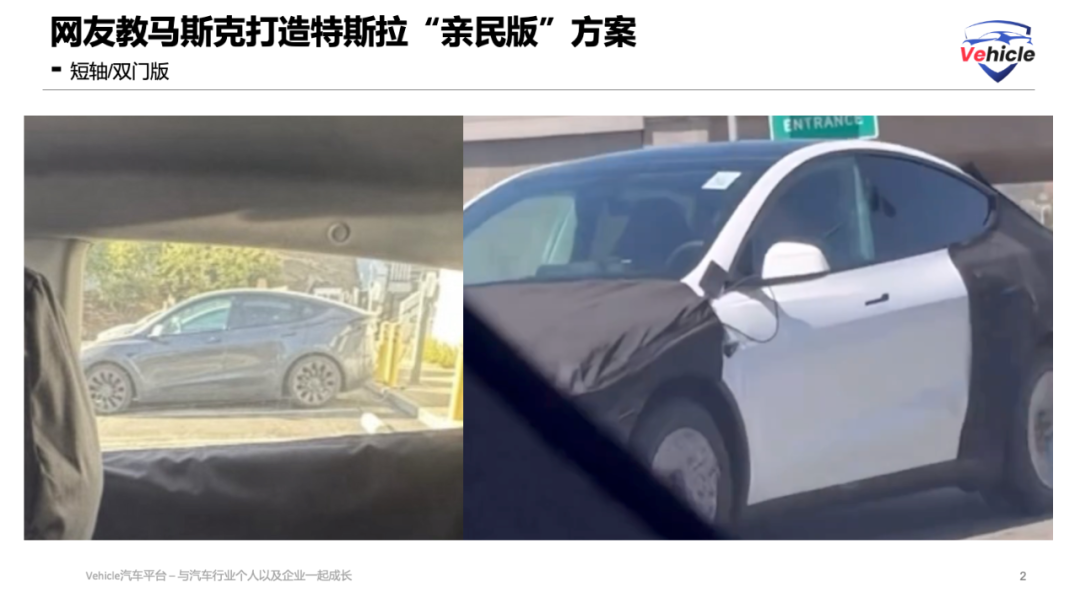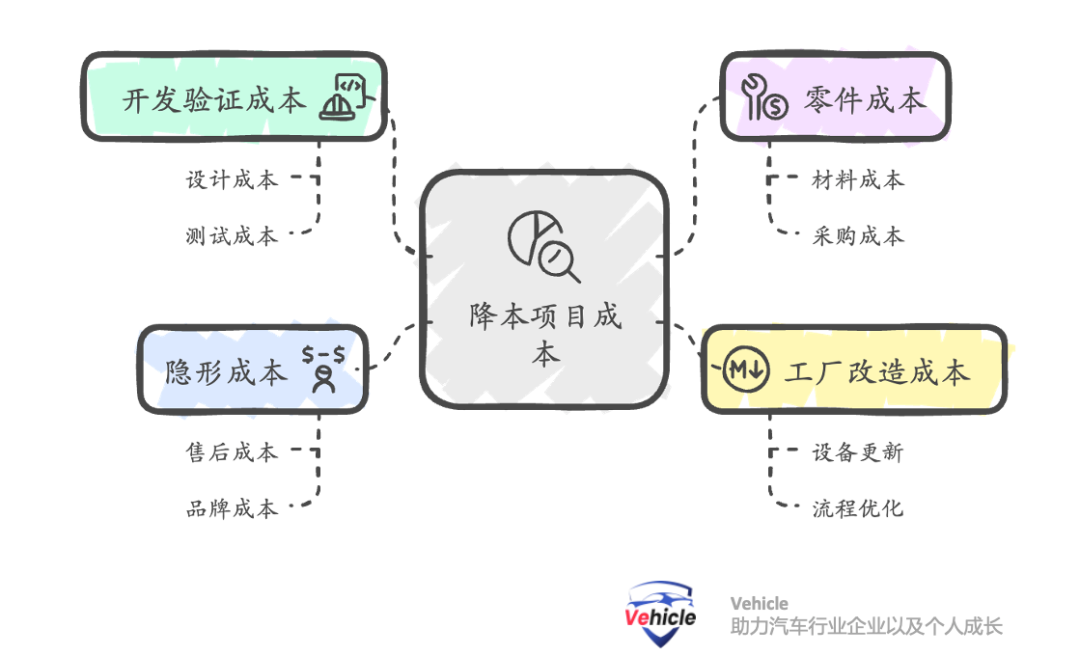The Dust Has Settled: Model Y Emerges as the 'Affordable Tesla' – An In-Depth Look at Cost-Cutting Measures
![]() 07/28 2025
07/28 2025
![]() 478
478
Tesla's Q2 2025 financial report revealed a significant downturn, with global deliveries plummeting by 14% and sales declining by 12% to $22.4 billion, marking the largest drop in at least a decade. Profits also shrank by 16% to $1.1 billion. A review of Tesla's financial performance over the past six quarters shows declines in five of them. Amidst intense market competition and waning sales, Musk has broken his own rule of 'minimum variants' by introducing a long-wheelbase Model Y in China and an 'affordable' Model Y globally.
The unveiling of Tesla's cost-reduction strategy for the 'affordable' Model Y has sparked widespread debate within the Chinese automotive industry. Curiosity abounds regarding Tesla's approach to cost reduction, the magnitude of the cuts, and how it differs from that of Chinese automakers.
This article consolidates relevant information and leverages expert insights to delve into Tesla's cost-reduction measures for the 'affordable' Model Y.
1. The Dust Has Settled: The 'Affordable Tesla' is Model Y!
During a recent earnings call, Tesla CEO Elon Musk confirmed that the company's more affordable electric vehicle, which it has been promoting for over a year, is indeed the Model Y. Moreover, this 'stripped-down' version is currently under development and is set to enter mass production in the second half of 2025. For a detailed transcript of the earnings call, refer to our previous article, "Tesla Q2 2025 Earnings Call Transcript (English and Chinese)." Musk stated that this model targets individuals who "want to buy a Tesla but can't afford it," adding, "People have a strong desire to buy cars, but they don't have enough money in their bank accounts. That's really the case."
Now that the rumors have been confirmed and the low-cost new car is indeed a more affordable Model Y, how exactly will Tesla implement its 'cost-reduction strategy'?
2. Netizens Offer Insights on Creating an 'Affordable' Tesla
Netizens have proposed various creative ideas for creating an 'affordable' Tesla. Some suggest removing the large center console screen, as seen in the recently unveiled Slate Truck (stay tuned to Vehicle for more on this American automaker funded by Amazon's CEO), and allowing users to use their phones as displays. However, this idea seems unlikely given Tesla's software ecosystem's centrality to the overall user experience.
Others propose reducing the number of cameras, raising the question: as Tesla aims for full self-driving (FSD) while cutting costs, should they also remove the computing power chips for Autopilot/FSD and external sensors? The Model Y currently has 8 cameras. If some are removed, will FSD still function? (Even with 8 cameras, it doesn't function perfectly.) This path would make trade-offs increasingly difficult. Clearly, these suggestions are more for entertainment than practical consideration. Based on Tesla's strategy and positioning, it will not abandon intelligence and autonomous driving, as these software-defined features are crucial for revenue generation and financial stability. Suggestions such as reducing wheelbase size and turning it into a two-door version have also been made, but these seem less likely.
So, what other methods could Tesla employ? The general consensus among netizens is that the Model Y is already criticized as 'barebones,' so how much more can be stripped away without compromising essential functionality?
3. Unveiling the Cost-Reduction Plan for the 'Affordable' Tesla Model Y
Based on reliable sources, Tesla is likely to create a cheaper Model Y through the following methods: Streamlining configurations by replacing leather seats with fabric, eliminating leather interior, switching to mechanical seat adjustments and manual door handles, installing plastic hubcaps, removing ambient lighting, downgrading the audio system, using non-matrix headlights or light bars, removing the HEPA air filter, and eliminating the rear display added in the 2024 refresh.
Offering only a rear-wheel-drive version by removing one motor and the associated control system. Reducing battery costs by continuing to use lower-cost lithium iron phosphate (LFP) batteries. Tesla has already started producing LFP batteries at its Nevada factory and may further reduce battery capacity in North America, similar to the 60 kWh version in China, to lower the overall vehicle price. Reusing all core factory molds and components, including one-piece stamping and production line processes, essentially enhancing the 'barebones' nature of the Tesla Model Y.
4. The Extent of Cost Reduction and How It Differs from Chinese Automakers
Firstly, the target price reduction plan must align with market positioning. According to relevant information, the expected starting price of the 'affordable' Tesla Model Y in China should be below 200,000 yuan, lower than the current cheapest Model 3 (with a starting price of approximately 231,900 yuan). In Europe, the expected price range is around 32,000-35,000 euros (current starting price is approximately 45,880 euros). In North America, it should be around $30,000 (current starting price is $46,630), unlikely to reach the $25,000 Musk initially mentioned. Based on the percentage of the selling price, the overall cost reduction is estimated to be around 20%-30%. Generally, cost reduction projects consider three parts: development and validation costs, component costs, and factory modification costs. Additionally, after-sales and brand invisible costs must also be considered. After-sales costs relate to quality, while brand costs relate to reputation. If cost reductions affect core components, especially the body and chassis structure, they may increase future after-sales and brand costs.
From the above, it is evident that Tesla's cost-reduction plan largely avoids compromising core structural components, ensuring manageable after-sales and brand costs. Simultaneously, development and validation costs are relatively low. With a 20% reduction in battery costs and the streamlining of configurations combined with component cost reductions, an overall cost reduction of approximately 30% is achievable. Clearly, Tesla's approach to cost reduction differs significantly from that of Chinese automakers, who tend to focus more on superficial aspects and may overlook the true long-term costs.
5. Will You Embrace the 'Affordable' Model Y?
If Tesla's cost-reduction plan for the 'affordable' Model Y aligns with our predictions, it represents a traditional and standard automotive cost-reduction approach, nothing groundbreaking. This suggests that the 'affordable' Model Y was somewhat necessitated by market pressures. However, if Tesla does launch a less expensive version based on the existing Model Y framework, how will existing or future Model Y customers perceive it? Do you believe Tesla's new low-cost/affordable model, the 'affordable' Model Y, holds potential? Welcome to vote and share your thoughts for discussion.





